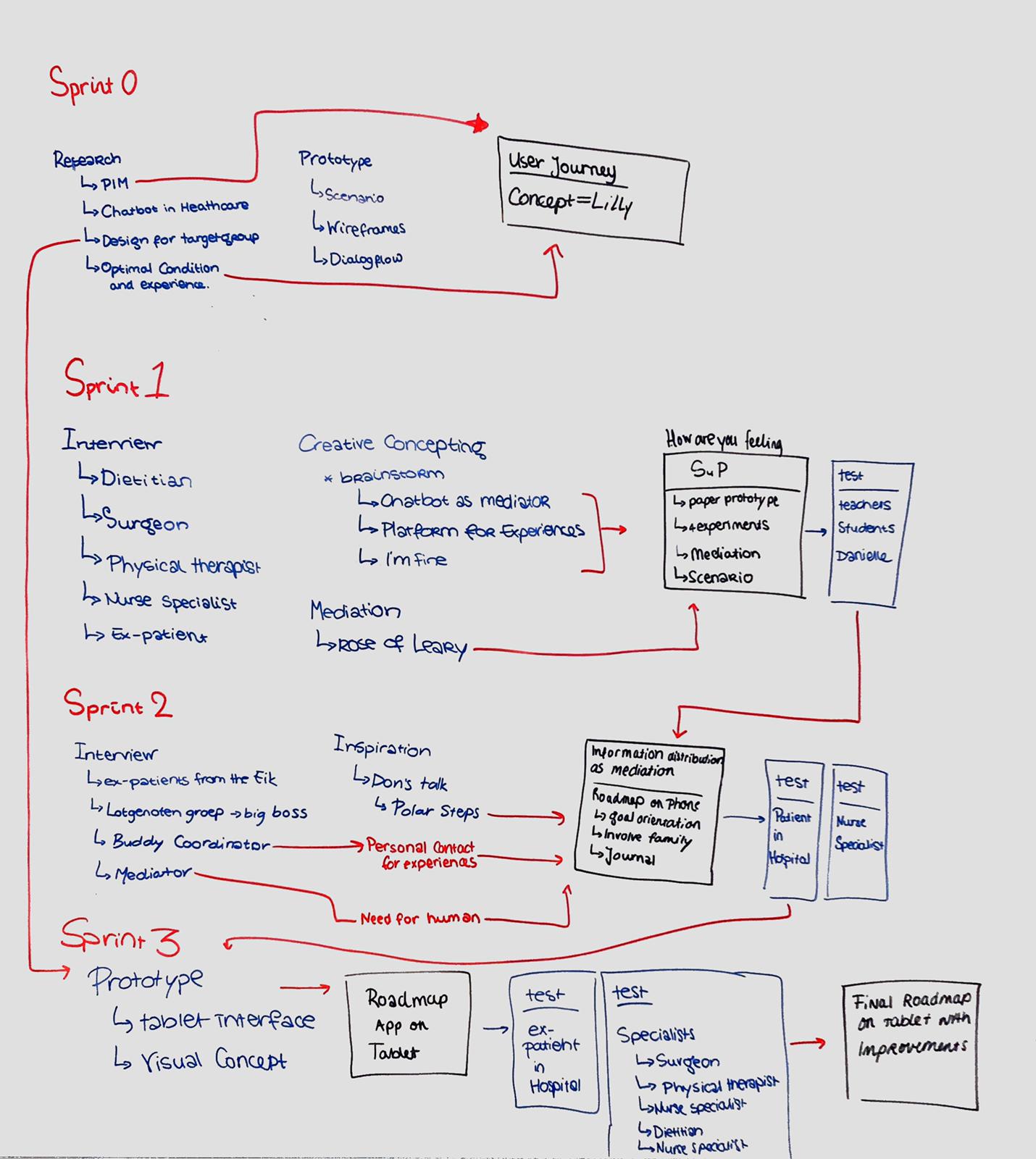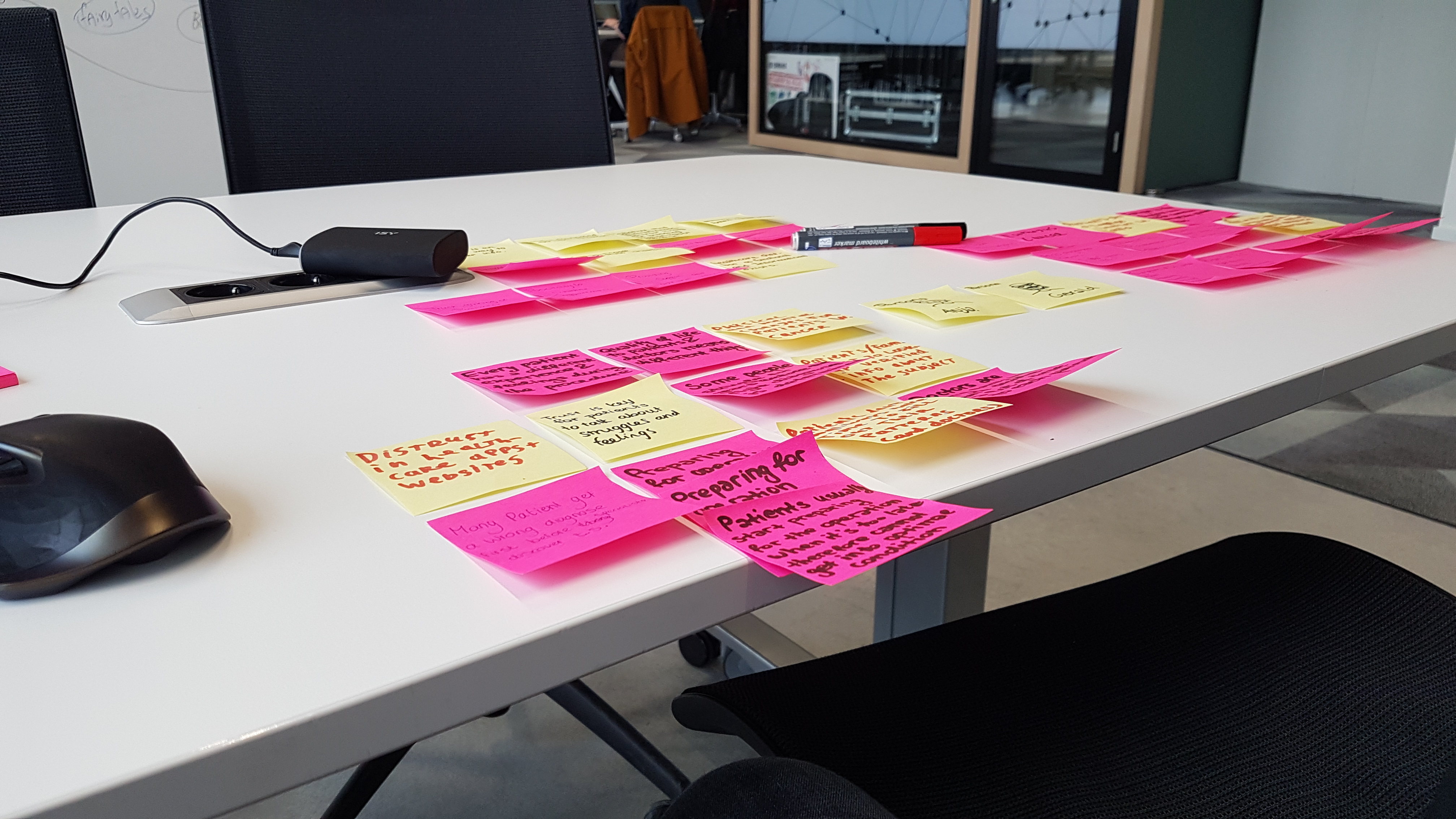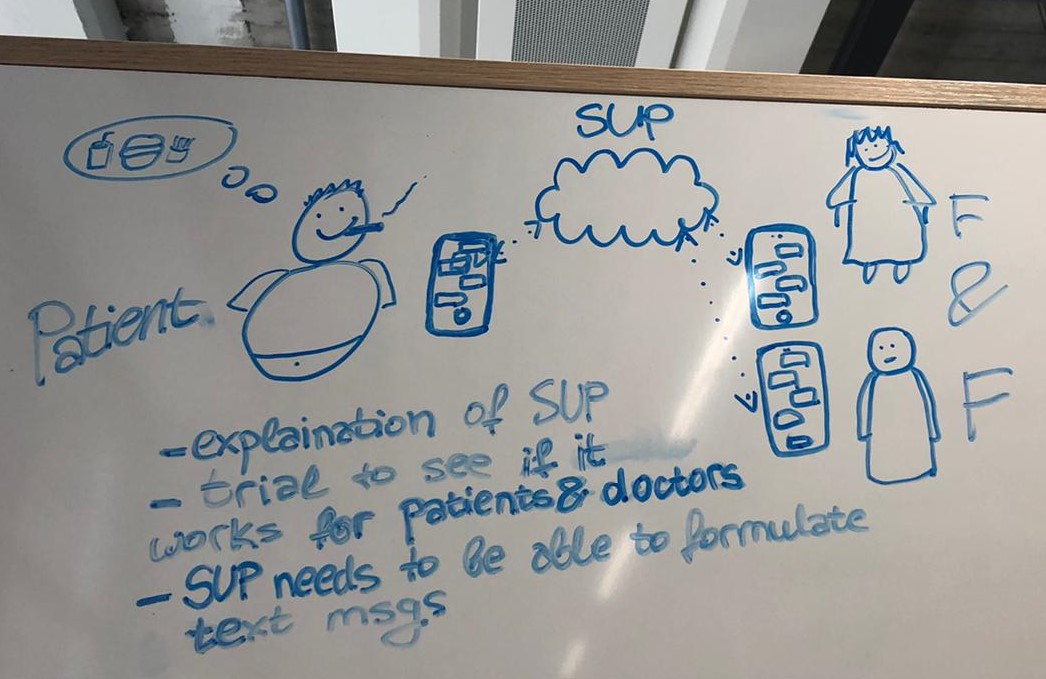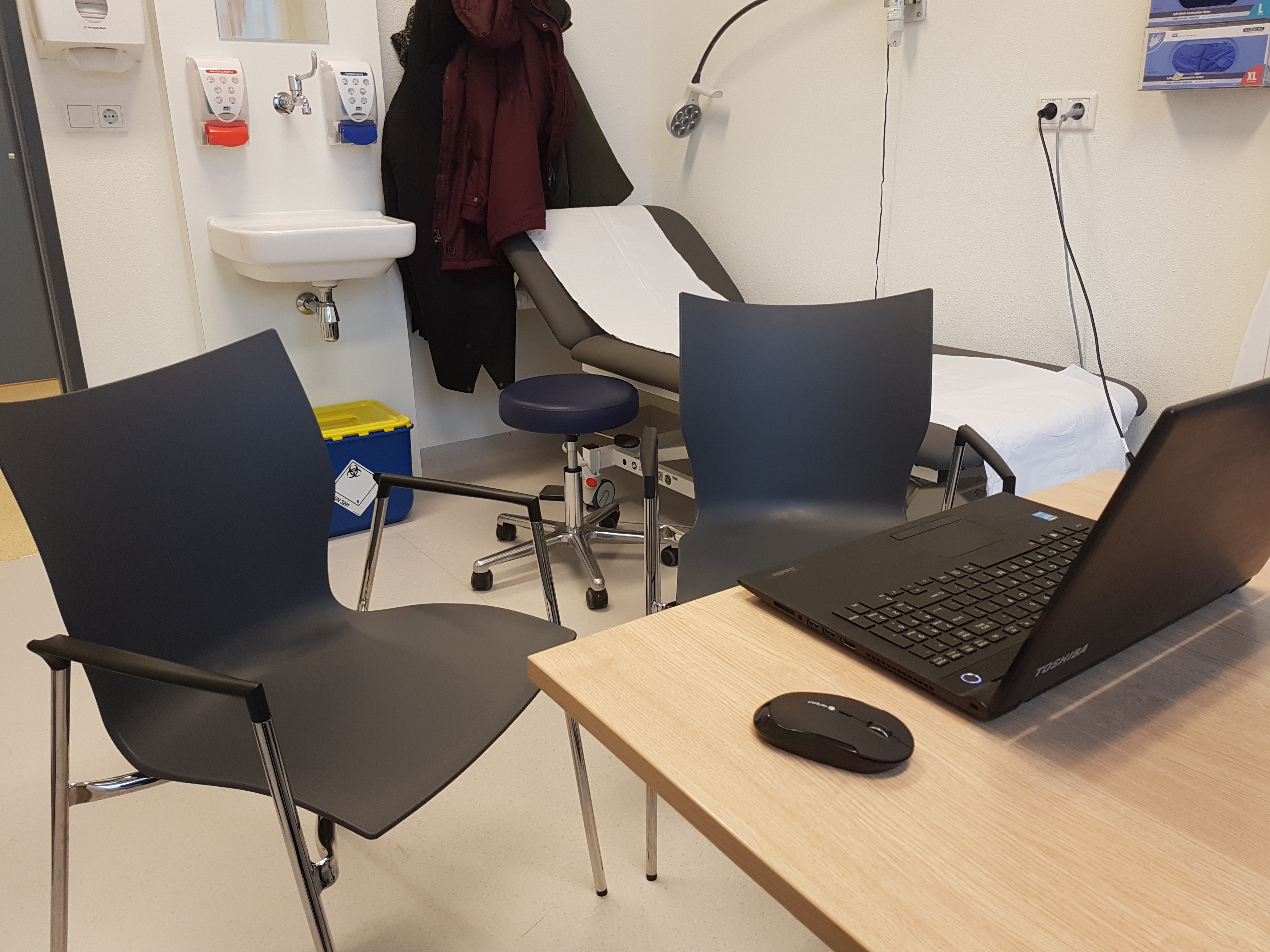Human Centered Design
Met criteria
We made many interactive prototypes that helped us visualizing our concept to the stakeholders. I applied my knowledge with the Human Centered Design process to better understand the end-users and make something that would actually be used at the end of the project.
| In each iteration, the students creates prototypes of interactive products or services in increasing levels of fidelity based on extensively involvement of the end-user in a methodical way resulting in prototypes (low/high/mid fidelity) that add customer value.Every sprint was another prototype that had improved fidelity. I experienced how to emphasizing with stakeholders can add better customer value. We used multiple research methods to find out what stakeholders are actually thinking about the concepts.
Sprint 0: Introduction Design Challenge & Research
This first iteration we've gathered some insights on the challengde and made some conclusions that guided us making concrete concepts. Most information was gathered by the internet, the client and other stakeholders. This information was being converted into schemas and other handy documents, like the debriefing, patient journey, and even some persona sketches. I've never done a research phase this explicit, but I reckon it was a solid base for having empathy with patients and (ex-)patients. A conversational agent was the most important part of our concept.
Read MoreSprint 1: Creative concepting
From our Lilly-concept, we moved on to a new concept called SuP (the mediator). It was a pity we didn't have a chance to do the interviews with specialists earlier. However, they confirmed that patient experiences and friends and family helps the patient with self-management. This sprint had exciting methods to collect user findings, such as ideation and thinking aloud. I felt like we worked as a team during this phase because we invented SuP as a team during that ideation session.
Read MoreSprint 2: Collecting patient experiences
We got in touch with patients who got treated in different hospitals, took different care paths and have personal stories to share. They confirmed our research by adding stories and giving practical examples. Using these patient experiences, we thought of a new concept that made the conversational agent more practically than emotionally/motivationally involved. I believe this step gave us more freedom in making an application that users want, instead of forcing the conversational agent into the process.
Read MoreSprint 3: Making a high fidelity prototype
Sprint 3 is the final sprint of our project. We gave animations and colour to our prototype and tested it with the specialists. There wasn't enough time to do tests with patients and other stakeholders. However, there is enough input to continue improving SuP and the roadmap.
It's funny to reflect that we first thought about making a futuristic concept regarding chatbots. Now, we made a prototype that doesn't seem too hard to build. But now I know that some functionalities will most definitely help all stakeholders.
Read MoreReflection on this course
The reason why many healthcare apps didn't get used is because developers didn't involve their end-users. That's why Human Centered Design can benefit us by connecting with the patients and specialists to understand what they experience and how our solution can help them. That's what we like to call: a co-creation with all stakeholders! I never participated in a project that 'co-created' in this proportion. That's what I liked during this one 😀
As a Google Drive owner, contact person between all stakeholders and scrum master, I wasn't used on working with all these different project phases and methods. It was hard for the project group to be on the same level of understanding; to share the same vision about the prototypes. However, when we changed our concept, after we collect insights from patients themselves, there was an idea that sparked our interests altogether.
I adapted new research frameworks and applied (new) knowledge to the concepts, such as ideation session (in sprint 1) and low fidelity testing. Unfortunately, I didn't got the chance to put my programming skills into practice because the concept repeatedly changed. That was something that disappointed me at first. On hindsight, I'm glad that we made a high fidelity wireframe as well. I even had some fun working on concepts in creative ways, but it was very frustrating to adjust to new project methods as well 😅




